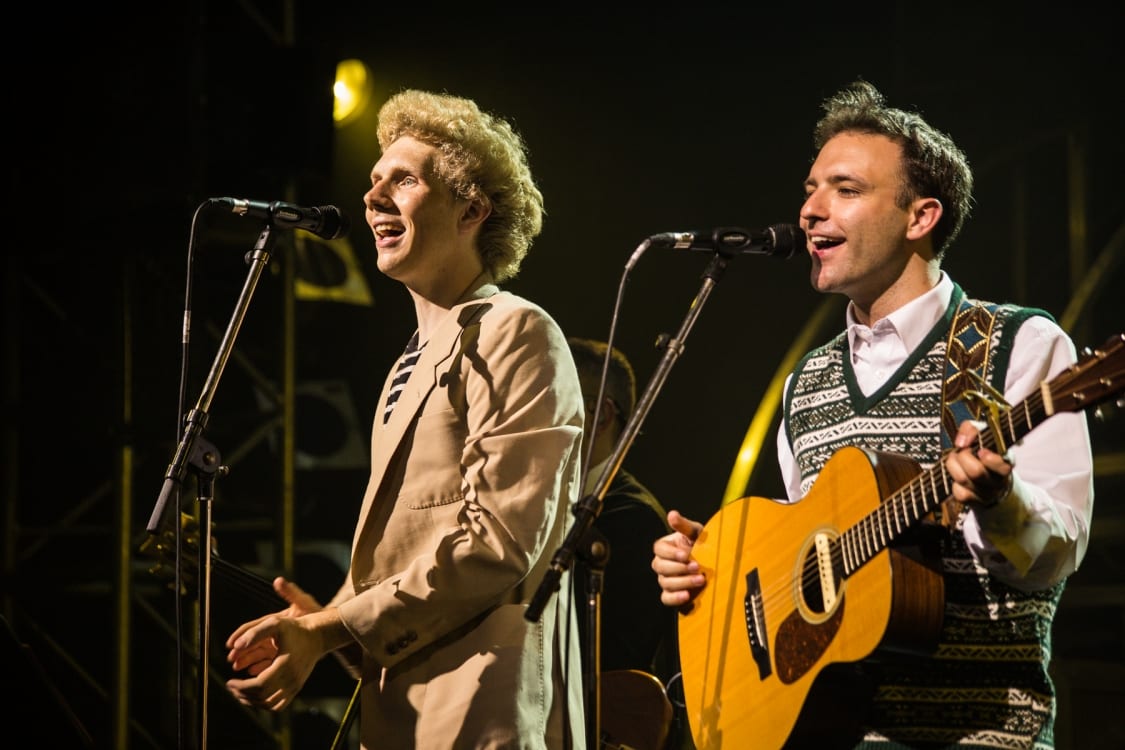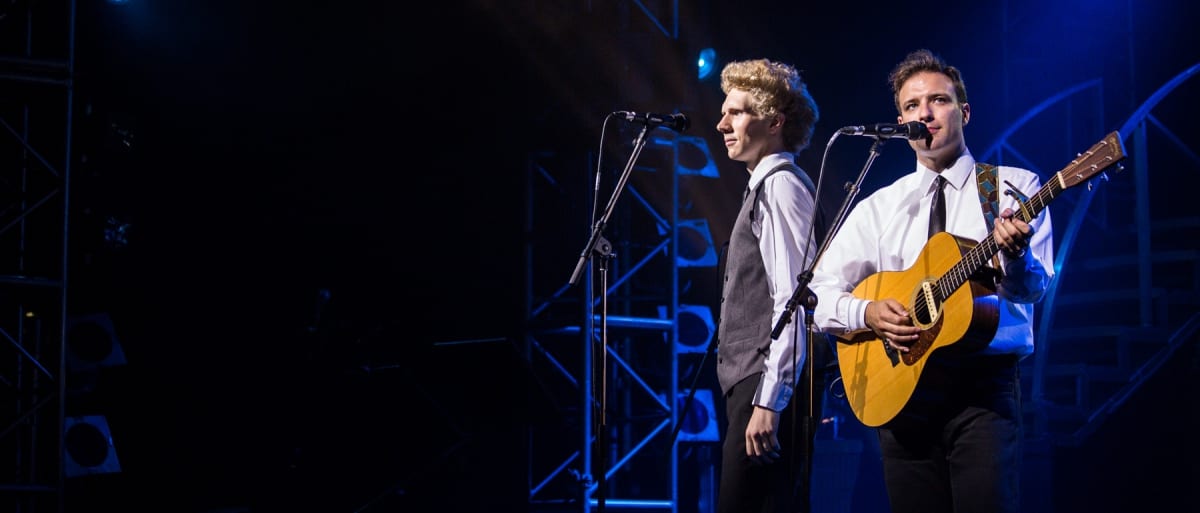Known for their vocal harmony and poetic lyrics that captured the sentiments of tumultuous times in America, the ‘Rock and Roll Hall of Famers’ Paul Simon and Art Garfunkel dominated the folk-rock scene in the 60s and 70s along with other music legends such as the Beatles and Bob Dylan. For any artist, to live up to the iconic duo’s standard is both a dream-come-true and nightmare of public pressure. Nonetheless, Maple Tree Entertainment Limited’s The Simon and Garfunkel Story is an all-inclusive celebration of the folk-rock legend. Featuring visuals from movies, cartoons and iconic political images from the 60s as well as timeless songs from Simon and Garfunkel’s very own albums, the show portrays the transformation and growing musical sophistication of the two young boys from Queens, New York as they rose to prominence from 15-year-old budding musicians in 1957, their mid-way separation, reunion, and to their ultimate success in the 1970s.
Two silhouettes—with their trademark hairstyles and distinctive figures—stand against the night blue spotlights in the dark. The image of Simon and Garfunkel appears on a large screen above them. Two uncannily similar voices in harmony emerge from the dark, singing the classic “The Sound of Silence”. The spine-tangling opening of the show seems to mark the reincarnation of the eminent pair. Philip Murray Warson (Simon) and Charles Blyth (Garfunkel) deliver a performance of the highest musical calibre as their vocal harmony embodies the same sublime unison of the original duo. In particular, Blyth’s huskiness and masterly control of the volume, tremulousness and emotions of his voice encapsulate the style and quality of Garfunkel himself, and not to mention that his skilful whistling brilliantly lightens up the theatre mid-way through the performance.

While the highlights of the show include “The Sound of Silence”, “Scarborough Fair”, “Bridge Over Troubled Water” (in the encore) and the thoroughly enjoyable and thrilling bass (by Leon Camfield), drum (by Mat Swales), electric guitar and keyboard (by Adam Smith) performances, not all of the renditions capture the original vibe of Simon and Garfunkel’s versions. During some of the songs, Warson’s and Blyth’s singing is slightly overwhelmed by the instruments.
Yet to seek exactitude seems to be both impossible and missing the mark of a tribute. (It’s The Simon and Garfunkel Story, but not The Simon and Garfunkel Show, anyways.) Director Mr Dean Elliott’s well-thought-through arrangement of the story by adding in narration about the lives of Simon and Garfunkel in between the songs as well as meticulous song choices highlight the key moments of the duo in accordance to their historical era. This brings forth a heart-warming experience for the audience, especially those who grew up living through the epoch or listening to the band’s songs. The visuals – ranging from cinematic classics such as The Graduate, Roger Moore’s James Bond movies, and Audrey Hepburn’s films, to light-hearted animations including Bugs Bunny and newsreels featuring Martin Luther King – successfully evoke the audience’s memories as they relive the Simon and Garfunkel’s golden age.
As the show ends with the Everly Brothers’ “Bye Bye Love”, the signature gesture of Simon and Garfunkel who used to end some of their shows by paying tribute to their heroes, this West End performance truly lives up to the spirit of the rock-folk icons. With the instrumental and vocal virtuosos, informative narration as well as meticulous theatrical arrangements, the production is a visual and audio feast for fans and enriching education for the uninitiated.

